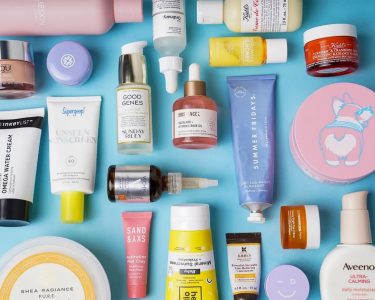Beauty is often perceived as something subjective, influenced by cultural standards and personal preferences. However, there is a fascinating scientific aspect to beauty that goes beyond aesthetics. In this feature, we delve into the intricate world of chemical reactions and their impact on our perception of beauty. By understanding the science behind beauty, we can gain insights into the physiological processes that contribute to our feelings of attractiveness and self-confidence.
One of the key factors in the science of beauty is the role of neurotransmitters, which are chemical messengers in our brains. These neurotransmitters, such as dopamine and serotonin, play a significant role in regulating our mood, emotions, and perception of pleasure. When we experience something beautiful or aesthetically pleasing, these neurotransmitters are released, creating feelings of happiness, satisfaction, and a sense of beauty.
For example, when we look at a beautiful landscape, a piece of art, or even a person we find attractive, our brain’s reward system is activated. This system involves the release of dopamine, a neurotransmitter associated with pleasure and motivation. The surge of dopamine reinforces our positive perception of beauty and contributes to feelings of joy and attraction.
Another important aspect of the science behind beauty is the role of hormones. Hormones play a crucial role in various bodily functions, including our skin health, hair growth, and overall physical appearance. For instance, estrogen is known to enhance the skin’s elasticity and moisture levels, giving it a youthful and radiant appearance. Testosterone, on the other hand, contributes to the development of facial hair in men, which is often associated with attractiveness and masculinity.
Furthermore, the science behind beauty also involves the study of pheromones, which are chemical substances produced by our bodies and can influence attraction and mate selection. Pheromones are odorless molecules that can trigger specific responses in other individuals. They play a role in our perception of attractiveness and can contribute to the chemistry and connection between individuals.
Beyond neurotransmitters, hormones, and pheromones, there are also the physiological effects of beauty on our overall well-being. Scientific research has shown that experiencing beauty, whether through visual arts, music, or nature, can have a positive impact on our mental and physical health. It can reduce stress, lower blood pressure, and enhance our immune system. These physiological responses further contribute to our sense of beauty and well-being.
It is important to note that the science of beauty is not solely focused on external appearance. It encompasses the entire experience of beauty, including how it affects our emotions, thoughts, and overall perception of ourselves and the world around us. The chemical reactions triggered by beauty extend beyond aesthetics and can have profound effects on our psychological and emotional well-being.
While beauty is often regarded as something subjective and personal, the underlying scientific mechanisms provide a deeper understanding of why certain things or individuals are perceived as beautiful. By exploring the science behind beauty, we gain insights into the complex interplay between our biology, psychology, and environment, shedding light on the intricate nature of human perception and attraction.
In conclusion, the science behind beauty unveils the chemical reactions and physiological processes that contribute to our feelings of beauty and attractiveness. Understanding these mechanisms provides valuable insights into the intricate relationship between our biology, psychology, and perception of beauty. By exploring the science behind beauty, we can develop a deeper appreciation for the complex and fascinating nature of human aesthetics and the profound impact it has on our well-being.




